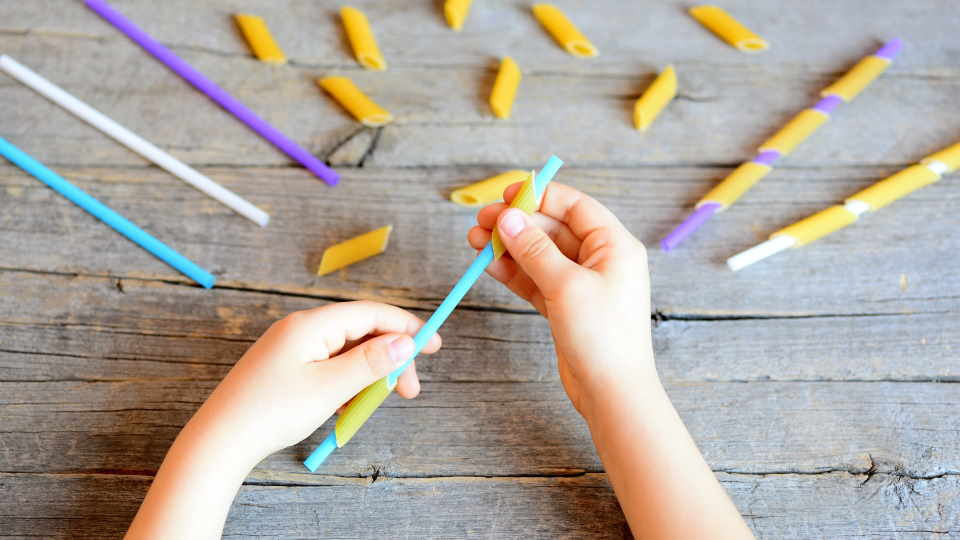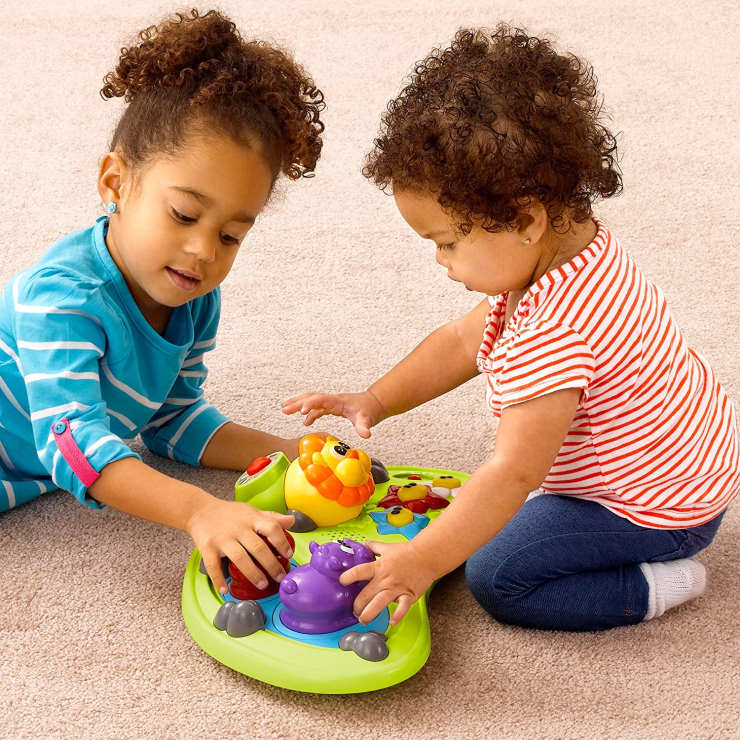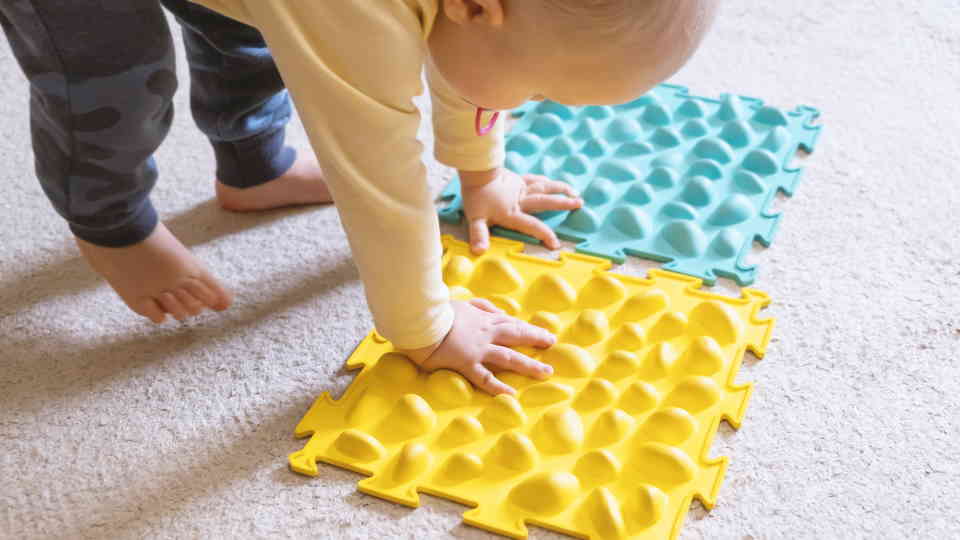Introduction
Fine motor abilities are essential for many of a child’s everyday tasks, including getting dressed, opening a lunchbox, and writing. Coordination of their fingers, hands, and eyes is required to master tasks like holding a rattle and the raking finger grab as an infant and using scissors, manipulating a computer mouse, and playing an instrument. Through this article, you will understand the significance of these abilities and the steps you may take to assist your kid in developing them.
Fine motor skills will develop in your kid via everyday actions and playtime activities, including grabbing, gripping, and pushing. They will also develop their pincer grip via feeding, play, and ultimately clothing themselves. Your child’s fine motor skills will rise to more complex levels as they mature and improve.
They’ll learn to use utensils like scissors and a pencil, form letters, read and write their names, open and close plastic baggies, insert a straw into a juice box, and access their lunchbox.
If you believe your kid is slipping behind or failing to reach specific milestones, consult with your child’s doctor. They may assess your kid and provide recommendations for activities you can do at home to assist your child in developing their fine motor abilities. They may also recommend you to a professional if necessary.
How Can I Help My Baby Develop Fine Motor Skills?

Your baby’s ability to do actions requiring a high degree of agility and precision, known as fine motor skills, will begin to improve as they ages. While kids should learn these abilities on their own, you may certainly assist them in making progress. In addition to this, you can watch their progress and ensure that everything is proceeding as planned.
As they grow and develop, infants need ongoing stimulation and connection. Place a couple of your fingers in the palm that they are holding. They will eventually acquire the ability to grab your fingers. You may get the same response from them by giving them a block, a rattle, or another kind of toy. It’s not a problem if they decide to drop it. Additionally, they must learn how to pick things up.
You should monitor them while they play when they are on their bellies. They will improve their upper body and back strength due to this. You might also try getting their interest with a baby gym filled with brightly colored toys. Even something as simple as singing children’s songs as they play with their fingers or toes might be beneficial. However, regardless of what you choose to do, you must check to see that everything is big enough to avoid the risk of choking.
Keep in mind that every baby grows and develops at a unique pace. What you consider typical for your firstborn child could not be normal for your subsequent children. The essential thing is to engage in conversation with them to assist in developing their fine motor skills and to communicate with them if you have any concerns that there may be a problem.
What Are Motor Skills for Babies?

Fine motor skills development activities for babies are one of the topics that parents are most curious about these days. In this context, various questions are asked. The most well-known of these questions is what motor skills are for babies. Children acquire 2 kinds of motor (movement) abilities: ‘fine’ motor skills and ‘gross’ motor skills.
The ability to move tiny items with one’s hands and fingers is known as fine motor abilities. The development of gross motor abilities requires practice in the coordination of the body’s bigger muscles to accomplish more complex actions.
A child’s ability to grasp, hold, grip, and pinch depends on their development of fine motor skills, which involve the tiny muscles in the hands and fingers. For instance, the ability to pick up food, grasp a pencil, or button on a blouse are all examples of activities that need fine motor abilities. The development of children’s fine motor abilities paves the way for them to acquire the ability to care for themselves and, ultimately, to write.
Fine motor abilities are vital. There is some evidence to show a connection between the development of fine motor abilities and the development of language, literacy, and the brain. The following are some further examples of fine motor skills:
- Clapping hands
- Playing with musical instruments by shaking them
- Alternating between picking up and putting down items
- Toy dough is being rolled out.
- Putting on footwear
- Brushing one’s teeth
Crawling, sprinting, leaping, and throwing are examples of activities that fall under the category of gross motor abilities. Other examples include skills such as fine motor coordination. You could see that when your child improves their gross motor abilities, they get more restless and don’t want to sit down for very long.
How Do You Test a Child’s Fine Motor Skills?

In connection with the subject of children’s fine motor skills development activities, you may want to test how many of these motor skills your child has. Also, as a mother, you may be concerned that your toddler may miss important developmental milestones. However, there is no reason to worry. While fine motor abilities are important for academic achievement, there are several methods to assess your child’s fine motor skills and help him develop them as required.
Cut simple shapes with your baby. With a heavy black marker, draw a square, circle, and triangle on a sheet of paper. By following the line, your baby may demonstrate how to use a pair of safety scissors. Don’t worry if it’s not perfect; the idea is to see whether he can make his hands follow the general design, even if it means cutting off the square’s corners.
Make dot-to-dot worksheets accessible to your baby; many are available online. Keep an eye on how your baby connects the dots. He should be able to draw a semi-straight line between two dots and connect the dots in a simple method.
Give your baby a selection of little things and have him sort them into different containers. If your kid can use his fingers to grip little things like pennies or beads and slide them into a small cup, his fine motor abilities are definitely on track. With little children, employ care since these products might cause choking.
Provide your baby with tracing activities. Draw basic images using a black marker on a sheet of paper. Tape a piece of tracing paper to the back of your design. Trace the lines with a crayon or pencil for your baby. Don’t be concerned if the lines are wobbly or wavy. He is probably on the right road if he can comprehend the fundamental notion.
Make handmade jewelry. Stringing big tube-shaped pasta, pearls, or straw bits onto yarn is an excellent approach to developing fine motor skills. Unthread the pieces to reuse them or knot them off so your kid may wear their creation.
What Motor Skills Do Infants Develop First?

When you research the subject of fine motor skills development activities for babies, you will come across internet users asking which motor skills babies develop first. Motor milestones mark exciting shifts in a baby’s life, but there is no uniform timetable that all newborns adhere to simultaneously.
For instance, by the time they are 6 weeks old, most newborns can raise their heads while lying on their stomachs. Most newborns can also elevate their chests using their arms as support by the time they are 3 months old. The typical infant can roll over from their back onto their stomach between the ages of 4 and 5 months. However, the precise time might vary. Some infants can learn to roll over as early as two months of age. The same may be said for a variety of other motor milestones.
For example, research indicates that more than fifty percent of neonates are capable of the activities listed below.
- At the age of 6 months, the baby can sit up alone.
- Crawling on hands and knees at the age of 8 months and a half,
- Must be able to stand unsupported by the age of 11 months, and
- Walk alone by the age of one year.
However, some babies accomplish these milestones several months early, while others do so many months later. You need to be familiar with the spectrum of what’s considered typical to determine whether or not your child is developing normally. The timing of a baby’s motor milestones may be affected by their surroundings and unique characteristics. When we provide infants with the opportunity to practice the abilities that they are learning, they acquire those skills more quickly.
What Causes a Delay in Fine Motor Skills?

Children can make minute motions with their fingers, toes, and other parts of their bodies since they have developed their fine motor abilities. A fine motor delay develops when a kid has difficulties moving tiny muscle groups. The ability to react with the appropriate motions calls for hand-eye coordination, which is developed via practice. In addition, they assist babies in talking by synchronizing the movement of the muscles in their faces, including their lips and tongue.
Children that have developed their fine motor abilities can use objects such as crayons, spoons, and toys. As they start to get older, they also make it possible for them to create words. Fine motor abilities develop at various levels. As early as two months, infants should start to develop them, and they should continue to show improvement throughout their lives. There may be a delay in the development of fine motor skills if these abilities seem to be growing slowly or if there is little growth.
A delay in developing fine motor skills may indicate autism or another physical, cognitive, or developmental issue in certain babies. Children with Down syndrome, muscular dystrophy, or cerebral palsy often delay their fine motor skills. Premature newborns also frequently have these delays.
Problems with eyesight, dyspraxia, or any number of other conditions might be the cause of the delay. However, in certain situations, all the kid may need is assistance from an occupational therapist to reach the milestones typical for their age group. Your child’s physician will be able to check for these developmental milestones at predetermined intervals; speak with them to determine whether or not an examination by an occupational therapist might be beneficial.
Conclusion

These days, people expecting to give birth to a baby or are new parents are wondering what exactly fine motor skills are and how they can support children’s development in this area. This article examined the subject of fine motor skills development activities for babies and sought answers to various questions.
The capacity to coordinate the motions of these little muscles in the wrists, hands, fingers, and even toes is referred to as fine motor abilities. In contrast, gross motor skills include controlling and directing your whole body and coordinating large muscle movements of your arms, legs, and feet. Fine motor abilities are required for everything from buttoning a shirt to writing.
So fine motor abilities are necessary for daily actions that we frequently take for granted, such as dressing, tying shoelaces, and sending an email. Your kid will learn to regulate and coordinate these little muscles throughout his growth, particularly via play. So encouraging your kid’s playtime activities isn’t only for pleasure; the game also helps your child develop fine motor skills (as well as other talents) that they will require daily.




